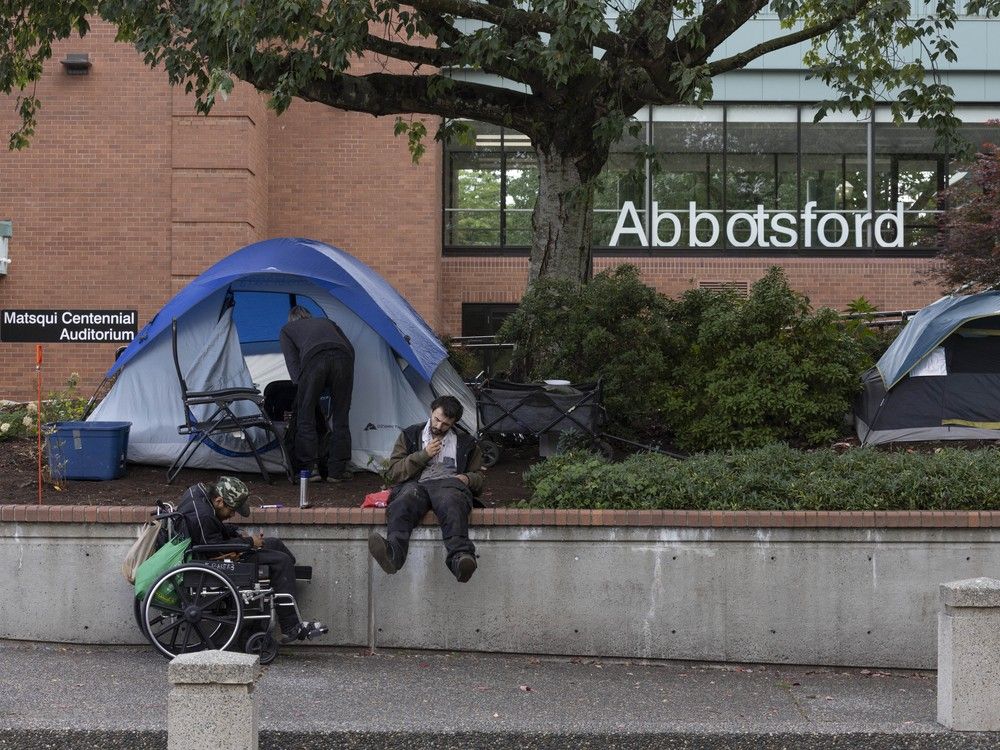Author of the article:
Associated Press
Nicholas Paphitis
Published Sep 06, 2024 • 3 minute read

LAKE MORNOS, Greece — Like ghosts from the past, sunken villages at the bottom of water reservoirs are not meant to be seen. But the ruins of Kallio in the mountains of central Greece are becoming very much visible — and they have a warning to deliver.
Advertisement 2
THIS CONTENT IS RESERVED FOR SUBSCRIBERS ONLY
Subscribe now to read the latest news in your city and across Canada.
- Unlimited online access to articles from across Canada with one account.
- Get exclusive access to the Toronto Sun ePaper, an electronic replica of the print edition that you can share, download and comment on.
- Enjoy insights and behind-the-scenes analysis from our award-winning journalists.
- Support local journalists and the next generation of journalists.
- Daily puzzles including the New York Times Crossword.
SUBSCRIBE TO UNLOCK MORE ARTICLES
Subscribe now to read the latest news in your city and across Canada.
- Unlimited online access to articles from across Canada with one account.
- Get exclusive access to the Toronto Sun ePaper, an electronic replica of the print edition that you can share, download and comment on.
- Enjoy insights and behind-the-scenes analysis from our award-winning journalists.
- Support local journalists and the next generation of journalists.
- Daily puzzles including the New York Times Crossword.
REGISTER / SIGN IN TO UNLOCK MORE ARTICLES
Create an account or sign in to continue with your reading experience.
- Access articles from across Canada with one account.
- Share your thoughts and join the conversation in the comments.
- Enjoy additional articles per month.
- Get email updates from your favourite authors.
Article content
As an unprecedented drought induced by climate change rampages across much of southern Europe this summer, reserves at the artificial Lake Mornos — the biggest of the four reservoirs supplying drinking water to Greece’s capital, Athens — have hit their lowest in 16 years.
The receding waters have exposed what was left of Kallio, a village submerged in the late 1970s to create the reservoir some 200 kilometres from Athens.

Colonies of freshwater mussels sprout from cracks in the muddy stonework — the now-empty shells tinkling like wind chimes in the breeze, blending with the sound of cowbells from herds grazing around the lake.
Greek authorities insist there is no cause for alarm, yet.
But if the drought continues and no action is taken, Athens could run out of water in about four years. Official advise Athenians to be conscious of their water consumption and preserve where they can.
By signing up you consent to receive the above newsletter from Postmedia Network Inc.
Article content
Advertisement 3
Article content
Costas Koutsoubas, deputy mayor of the surrounding Doris municipality, says he is concerned for the future after a drought has lasted for three years.
“If the same weather pattern persists, if it doesn’t rain enough and there’s no snow, then next year we’ll be talking about a dramatic situation,” he says. “We need it to pour in buckets, night and day, for five days.”
According to Eydap, the Athens water commission, total reserves for the city of about 3.6 million people fell to 678 million cubic metres in early September, from 1.13 billion cubic metres two years previously.
Lake Mornos now has about 335 million cubic metres of water _ from 592 million in September 2022. That’s the lowest since 2008, when the lake’s reserves fell to 210 million cubic metres.
Advertisement 4
Article content
And it’s not just Athens. Over the past two years, most of Greece has suffered dry winters and record-hot summers, which contributed to a spate of destructive summer wildfires. Last month, a blaze northeast of Athens gutted scores of homes and scorched a land area almost twice the size of Manhattan.
As the tourism-reliant country sees record numbers of foreign arrivals — and a summer spike in water consumption — some parts of the country face cuts in drinking water, empty irrigation reservoirs and drying boreholes.
Last week, the Environment and Energy Ministry said Eydap would reopen existing boreholes north of Athens and draw water from a fallback reservoir. It would also take additional action over the next four years, to redice network leaks, tap rivers further afield and recycle wastewater for irrigation and industrial use, the ministry said.
Advertisement 5
Article content
“Finally, if the circumstances require it, at some later point, water-saving actions will be implemented,” a ministry statement said without elaborating.
“Everyone is advised to join in the common effort through rational use of water reserves,” it added.
There is concern that more — and worse — is coming. Climate change, with human-generated greenhouse gas emissions, and rising temperatures have increased the risk of droughts.
Back when the reservoir was created, Kallio’s 60-70 village homes and a half-dozen water mills seemed a small sacrifice for the greater good. The few of its inhabitants who didn’t move to Athens or other cities relocated to higher ground, above the lake.
With the reservoir levels sinking, they can now see the ruins of their old homes.
“We were very upset to leave, it was a great village,” said Constantinos Gerodimos, a 90-year-old farmer.
“We had lots of water, orchards with fruit trees, you name it,” he said. “People from other villages would come here to get water.”
— Associated Press writer Theodora Tongas at Lake Mornos, Greece, contributed to this story.
Article content
.png)
 2 weeks ago
12
2 weeks ago
12


































 Bengali (BD) ·
Bengali (BD) ·  English (US) ·
English (US) ·